

The city of Havana, Cuba, is widely believed to have played host to a convention of American Mafia leaders beginning in December of 1946. According to legend, the gathering, a sort of syndicate board meeting based at the Hotel Nacional, was presided over by exiled former U.S. Mafia chieftain Salvatore "Charlie Lucky" Lucania.
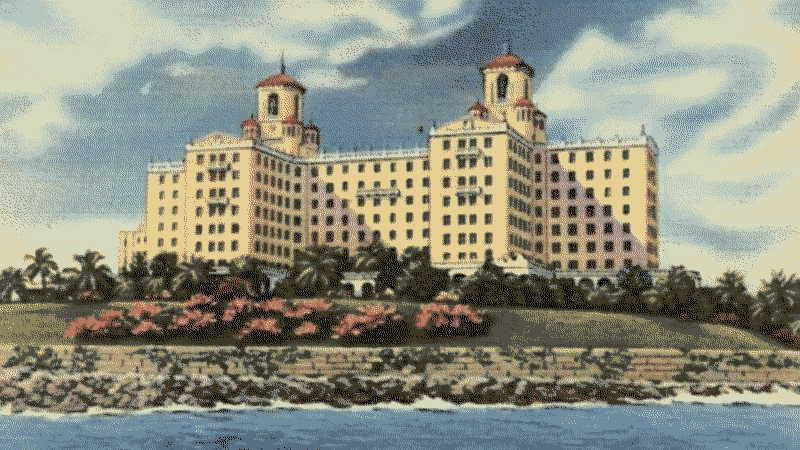
Hotel Nacional
Some sources point precisely to December 20 or December 22 as the date of the massive assembly. It seems unlikely that a single, large-scale convention of mafiosi occurred on those dates or at any other date in that period. Instead, it appears that a number of very small and casual social events and meetings of organized crime figures occurred in Havana from late 1946 into the early days of 1947.
The Mafia's supreme arbitration board, the Commission, is believed by some to have met in Havana during this period. That also seems unlikely. Some Commission members did travel to Havana in 1946-1947 but at different times. Other Commission members are not known to have gone to the island at all.
The Commission had been put in place near the end of 1931 as a replacement for the failed system of trusting in a single boss of bosses to settle disputes. The arbitration panel met as needed and held formal meetings every five years after creation. The timing was right for the Commission to assemble at the end of 1946, but there is some reason to believe that the scheduled meeting occurred in nearby Florida, separate from any goings-on in Havana. [1]
Organized crime figures had been involved in Cuba at least as early as the start of the Prohibition Era. Close to southern Florida, ruled by corrupt regimes and visited by wealthy American tourists, Cuba became an important part of rum-running, narcotics smuggling, gambling and prostitution rackets. By the 1940s, it would not have been considered unusual for American gangsters to be spotted at Havana hotels, nightclubs, racetracks and casinos. Some of the documented early connections between the U.S. underworld and Cuba are listed here:
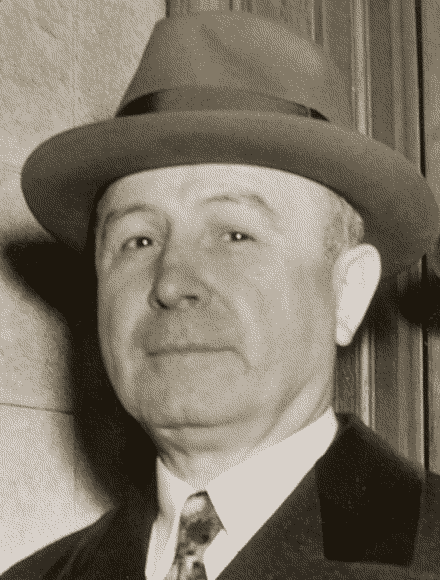
Torrio
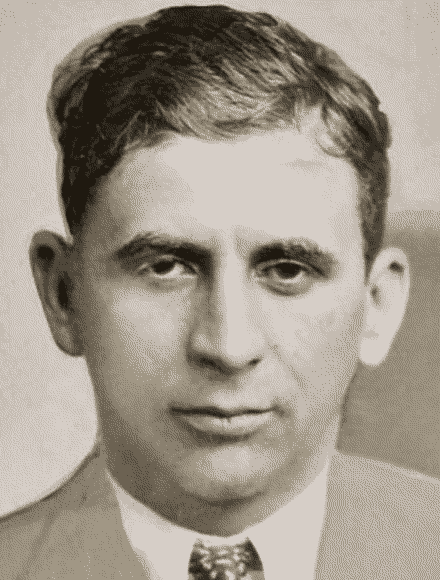
Lansky
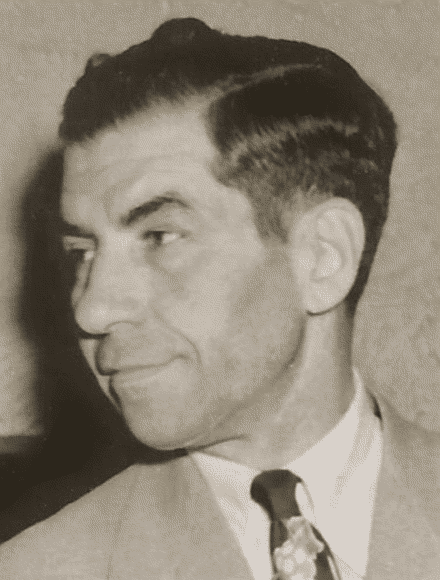
Lucania
Salvatore "Charlie Lucky" Lucania (widely known as "Charlie Luciano") became the most influential Mafia boss in the United States following the 1930-1931 Castellammarese War and the September 1931 assassination of the last boss of bosses, Salvatore Maranzano. With Lucania's backing, the old boss of bosses system of resolving disputes was replaced by a representative Commission of select Mafia leaders. [15] The system was designed for long-term stability. However, by the time of the 1936 Commission meeting, [16] Lucania already was out of action. He was beginning a thirty- to fifty-year prison sentence for compulsory prostitution.
Initially held at Sing Sing Prison in Ossining, Westchester County, New York, Lucania was transferred to Clinton State Prison in remote Dannemora (near the Canada border, more than three hundred miles from New York City) in summer of 1936 and later moved to Great Meadow State Prison in Comstock (in the Lake George area, about a hundred miles closer to New York City). [17] Control of day-to-day crime family operations passed to Frank Costello, but Lucania likely retained the title and authority of boss during his imprisonment. [18]
Early in 1946, the remainder of Lucania's prison sentence was commuted by then-Governor Dewey on the condition that Lucania accept deportation to Italy. [19] In the morning of February 10, 1946, Charlie Lucky departed New York harbor aboard the S.S. Laura Keene. He arrived at Naples, Italy, on February 27. [20] Almost immediately, the Mafia leader began planning a return trip across the Atlantic.
He obtained a six-month visa to visit Cuba on September 19. Cuban officials helped with his transportation arrangements, and Lucania arrived in Havana on October 29, with an Italian passport and papers allowing travel to Venezuela, Colombia and Bolivia. [21] During his time on the island nation, it is practically certain that Lucania met with some of his former underworld colleagues and made an effort to invest in Havana-area gambling enterprises.
Many accounts have been written of the legendary Havana underworld convention that followed Lucania's arrival. They often depict the event as a giant meeting of an international crime syndicate's board of directors, with Lucania serving as the chairman of that board. These accounts are based on little more than their authors' imaginations.
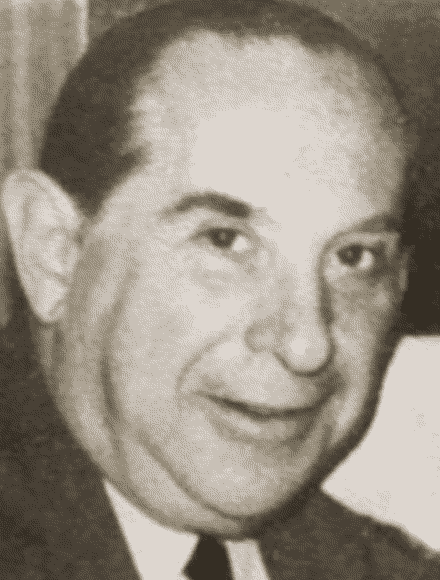
Author Gosch
The most elaborate of the created tales was offered in 1975 within The Last Testament of Lucky Luciano, authored by Martin A. Gosch and Richard Hammer. Even before that book was publicly released, it was found to contain creative embellishments, historical inaccuracies and outright lies (FBI investigated and decided it was fraudulent, and a December 1974 preview of the work by Nicholas Gage of the New York Times reached a similar conclusion.) These discoveries did little to hurt the book's popularity and earnings or to prevent it from being cited in later works of less-than-careful historians.
In describing the gathering, Gosch and Hammer attributed extensive invented quotes to Lucania and even inserted dramatic bits of dialogue. They claimed that exiled former boss Lucania ordered U.S. Mafia big shots to Havana, intending to have himself crowned as the new boss of bosses.
An impressive list of attendees was created by Gosch and Hammer. The list included New York-New Jersey area crime figures Meyer Lansky, Joseph "Adonis" Doto, Albert Anastasia, Joseph Bonanno, Frank Costello, Tommy Lucchese, Joseph Profaci, Joseph Magliocco, Guarino "Willie Moore" Moretti, Anthony "Augie Pisano" Carfano and Mike Miranda. Also in attendance, they claimed, were Stefano Magaddino of Buffalo, Charles and Rocco Fischetti of Chicago, Carlos Marcello and "Dandy Phil" Kastel of New Orleans and Santo Trafficante of Tampa, Florida. All these and more supposedly piled into a meeting room at the Hotel Nacional to receive further orders from Lucania.

Siegel
The authors reported that Lucania was successful in being named top man in the crime syndicate but failed in his alleged secondary goal of guiding the Mafia away from involvement in narcotics. Sensing that the majority wanted to be free to handle drugs, Lucania merely advised against it.
Gosch and Hammer stated that the assembled mafiosi then passed a unanimous death sentence against associate Benjamin "Bugsy" Siegel. This was reportedly a disciplinary measure, as Siegel was believed to have stolen money from mob investments in his planned hotel-casino project in Las Vegas.
Following the Mafia leadership meetings, Gosch and Hammer created a confrontation between Lucania and his former New York underboss Vito Genovese. A disagreement turned physical, and Lucania beat up Genovese, according to the authors. But, they claimed, Genovese had already supplied U.S. federal officials with a story about Lucania being in Havana to arrange narcotics trafficking, and that resulted in U.S. pressure on the Cuban government to deport Lucania back to Italy. [22]
Enrique Cirules, an award-winning Cuban author, was suckered by the Gosch-Hammer fraud. In his 2004 book, The Mafia in Havana, Cirules repeated and expanded upon the Havana convention tale. According to Cirules, the Hotel Nacional was closed to the public between December 22 and December 26 in order to accommodate five hundred visiting mafiosi and one hundred of their attorneys. The hotel, Cirules wrote, also prevented access by journalists, police and government agents, all without raising any suspicion.
Cirules' list of attendees included Adonis, Anastasia, Bonanno, Carfano, Costello, Genovese, Lucchese, Magaddino, Magliocco, Marcello, Miranda, Moretti, Profaci and Trafficante. He added Tony Accardo of Chicago. According to Cirules, attendees hammered out agreements on a wide variety of issues:
Luciano's presence in Havana was truly eventful. Talks were held on spheres of influence, territorial problems, the issue of the drug trade and the opening of the empire of Las Vegas, starting with the famous Hotel Flamingo. [23]
Released at about the same time as Gosch and Hammer's account, writer George Wolf's story provided a different view. Wolf had been an attorney for Frank Costello and naturally wrote that the Havana gathering was primarily about his former client. According to Wolf's book, underworld figures had invested in Benjamin Siegel's Flamingo hotel-casino project by channeling money through Costello, and they blamed Costello for the project's rapidly growing pricetag and Siegel's apparent skimming of funds. When Lucania arrived in Havana, these disgruntled investors approached him with complaints about Costello's mismanagement. Wolf reported that Lucania asked them to give Costello a chance and then instructed Costello to ensure they did not lose their money. [24]
Nick Gentile, a longtime mafioso in the U.S. and Italy, did not participate in the Havana convention. But Gentile later wrote about what he knew of it in his Italian-language memoirs, Vita di Capomafia. He said his information came directly from Lucania. Gentile was known to be in close communication with Lucania following his return from Havana in 1947.
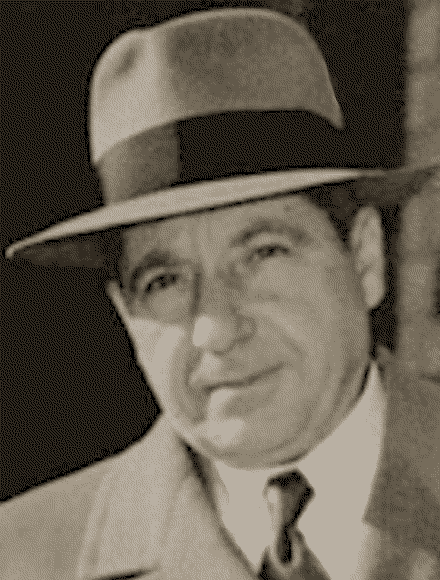
Costello
According to Gentile, as soon as Lucania's New York contacts became aware of his presence in Cuba, the federal government also became aware and began investigating. The Federal Bureau of Narcotics considered Lucania an international drug trafficking boss. Gentile reported that Lucania's underworld allies gathered in Havana to meet with him. The travelers included his Jewish friends (Gentile did not specifically name Meyer Lansky) and Italian crime figures Frank Costello, Guarino "Willy Moore" Moretti, Joseph "Adonis" Doto and the Fischetti brothers from Chicago.
Lucania subsequently was forced out of Cuba, according to Gentile, as a result of conflicts among that nation's powerful politicians. [25]
In stark contrast with the extravagant fabrication of Gosch and Hammer, Gentile's account comes across as a small-scale social gathering of old friends. This difference can be easily explained. While Gosch and Hammer were motivated to make the event as grand and important as possible (and to foreshadow later narcotics-related events), Gentile - considered by U.S. officials to be a conspirator with Lucania in the drug trade - may have been highly motivated to dismiss it as inconsequential.
In 1951, the U.S. Senate's Kefauver Committee turned its attention to reports of Lucania's Havana convention. Called as a witness, Willie Moretti testified that Lucania was a "good friend." He admitted that he traveled to Cuba when Lucania was there and noted that Vincent Mangano (boss of his own New York-based crime family) and Gerardo Catena (Moretti ally and a top crime figure in New Jersey) went with him:
"We happened to be in Florida, and I took [Catena] along with me," Moretti said. "I wanted to see Charlie Lucky, so they volunteered, just on a friendly basis." [26]

Moretti
While Moretti got himself in some trouble with his peers for talking so freely to the Kefauver Committee, his account included no mention of a large meeting. To Moretti, the Havana trip was merely a social gathering of a few old friends who had not seen each other for a while.
Joseph "Joe Adonis" Doto also was called as a witness before the committee. Perhaps because there were concerns about his U.S. citizenship, Adonis would not discuss his travels outside the country. He would not say whether he visited Lucania in Havana. He did acknowledge longtime friendly relationships with Frank Costello, Willie Moretti, "Dandy Phil" Kastel, Gerardo Catena, Meyer and Jake Lansky, "Little Augie Pisano" Carfano and the Fischetti brothers. Through the order of questioning, the committee appeared to be trying to ascertain if those crime figures gathered with Lucania in Havana. But Adonis made no statement to support the notion. [27]
According to Bill Bonanno, son of crime boss and Commission member Joseph Bonanno, the Commission meeting of 1946 was held just before Christmas on a Moretti-owned yacht docked in Miami, Florida. Commission business included discussion of Lucania's role, but that discussion was focused on finding a permanent replacement for Lucania as crime family boss, Bonanno wrote in The Last Testament of Bill Bonanno. Lucania was consulted. He agreed to step down as official boss and threw his support behind Frank Costello as his successor. Bill Bonanno stated that matters relating to Benjamin Siegel and narcotics trafficking also were discussed by the Commission, but Bonanno reported no role for Lucania in those discussions. [28]
Meyer Lansky is known to have made a quick, early November trip to Havana. He reached Cuba on November 3 and flew back to Miami, Florida, two days later. After a month, he returned to Cuba, and he wasn't alone for that visit.

Costello and Lansky return to Miami.
Frank Costello made the trip with Lansky at the start of December 1946, according to aircraft travel records. After a couple of days, they returned to Miami, touching down on December 3, 1946. [29]
Airline records indicated that "Joe Adonis" Doto and Vincent "Jimmy Blue Eyes" Alo, returned together on December 9, 1946, after a short trip to Havana. For the aircraft manifest, Doto indicated that he was born in Passaic, New Jersey, on November 5, 1901. [30] That information and a supportive New Jersey birth record later turned out to be fraudulent. Doto was, in fact, born in Italy and brought to the U.S. by immigrant parents when he was a child.
Willie Moretti's late 1946 presence in Miami Beach, Florida, was documented by the U.S. Senate's Kefauver Committee. [31] An aircraft manifest showed Moretti, Vincent Mangano and Gerardo Catena returning to Miami on December 17, 1946, after a few-day trip to Havana. [32]
The trips taken by Costello, Adonis, Alo, Moretti, Mangano and Catena - all occurring in the first three weeks of December - appear consistent with Bill Bonanno's report that Lucania was consulted before an official replacement for him as crime family boss was designated at a Commission meeting just before Christmas.
The next known visits of mafiosi with Lucania did not occur until February, 1947.

Sinatra and the Fischettis return to Miami.
Charles, Rocco and Joseph Fischetti appeared in travel records returning to Miami on February 14, 1947, after a few-day trip to Havana. Traveling with them was singer Frank Sinatra. Sinatra's address was shown in the airline manifest as "10051 Valley Spring Lane, Hollywood, Fla." It was correct except for the "Fla." portion. Sinatra used a home address of 10051 Valley Spring Lane, North Hollywood, California. (The residence was physically located in the Toluca Lake community.) [33]
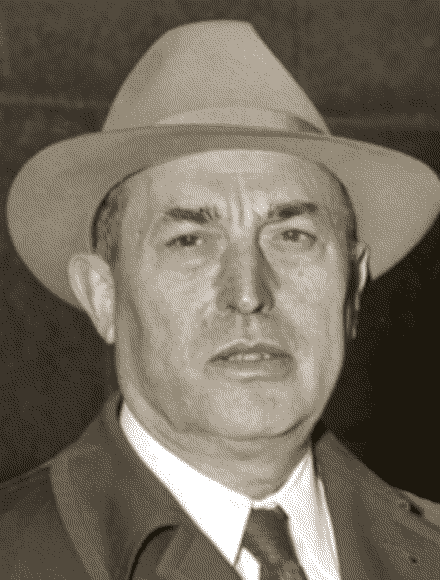
Profaci
The return from Havana of New York crime family bosses Vincent Mangano and Joseph Profaci, along with Profaci second-in-command Joseph Magliocco, was noted in airline records on February 19. Magliocco's time in Havana began on February 13, meaning his stay overlapped by one day with that of the Fischettis and Sinatra. Mangano and Profaci arrived there February 17, several days after the Fischetti group left. [34]
Santo Trafficante, Jr., the Mafia leader in Tampa, Florida, appears not to have traveled to see Lucania, though Trafficante was a frequent visitor to Cuba. Travel records show that Trafficante was in Havana in July 1946, before Lucania arrived, and then in June, 1948 (with Sam Lumia). [35]
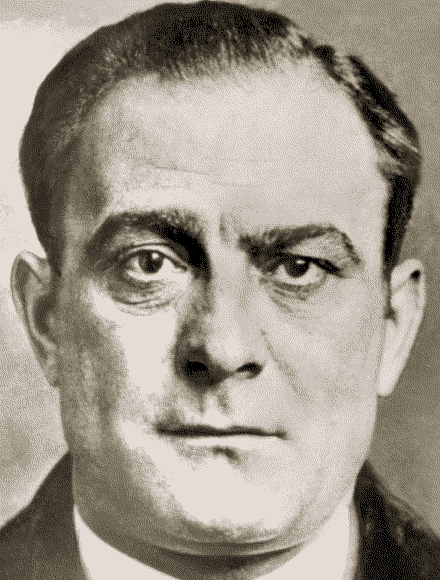
Genovese
Lucania's former second-in-command, Vito Genovese also seems to have avoided Cuba, though a number of published accounts of a Havana convention made him a central figure. Genovese had only recently (June 1, 1945) been returned to the New York from Italy in U.S. Army custody to stand trial for murder. He was freed of the charge on June 10, 1946. (See Writers of Wrongs post, ("Peers salute Genovese after murder acquittal.") It is possible that Genovese did not feel secure enough in his U.S. naturalization - obtained just before leaving the country in 1936 and then working with Benito Mussolini's Fascist regime in Italy through World War II - to take any chances.
It is conceivable that other crime figures traveled to Havana and back through secret means, unnoticed by immigration officials at airports and seaports. But traveling without legal documentation would have left them extremely vulnerable to arrest and/or expulsion on both ends of a trip. With Lucania constantly watched by Cuban and American agents, this would have represented a great and unnecessary risk, considering the relative ease of legal Miami-to-Havana travel at the time. If some circumstance justified the jeopardy of mafiosi traveling to Havana in secret or if a large-scale underworld convention in Havana actually occurred without law enforcement learning of it, it is curious that so many leading crime figures made documented trips during the period of Lucania's stay.
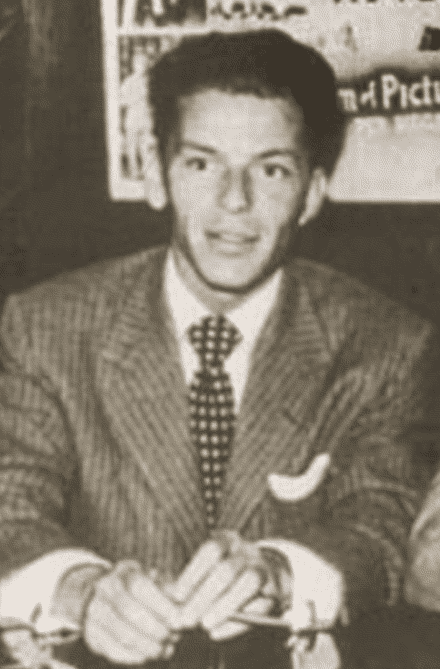
Sinatra
Many of the legends relating to the Havana convention include mention of entertainer Frank Sinatra. Some suggest that Sinatra actually performed in front of a gathering of all U.S. Mafia bosses.
The presence of Sinatra in Cuba during this period and his association with Lucania were documented in reports of the Federal Bureau of Investigation. But the period of Sinatra's known presence in Cuba did not occur during the late December dates most often given for the Mafia convention.
Sinatra had personal connections with a number of underworld figures. The Fischetti brothers of Brooklyn and Chicago were counted among his close contacts. Guarino "Willie Moore" Moretti of New Jersey, where Sinatra grew up, was said to be a sort of protector for and investor in the crooner early in his career. (The FBI documented Moretti's connection to Sinatra and to another celebrity from New Jersey, movie and television comedian Lou Costello.) [36]
The FBI appeared to first become aware of Sinatra's trip to Cuba when it was mentioned in a Robert C. Ruark newspaper article published on February 20, 1947. The article was quoted in an FBI report:
"In February, 1947, a newspaper columnist reported that Frank Sinatra had been in Havana, Cuba, for four days during the past week and 'his companion in public and in private was Luciano, Luciano's bodyguards, and a rich collection of gamblers and high-binders. The friendship was beautiful. They were seen together at the race track, the gambling casino and at special parties.'"
A later article included comments from Lucania. Charlie Lucky reportedly noted that Sinatra had been criticized in the media for meeting with him. The crime boss asserted that he first met Sinatra in Cuba and had not known him from their earlier common days in the New York-New Jersey area. [37]
A piece by columnist Danton Walker, published on February 28, 1947, further explored Sinatra's Cuba visit. Walker said Sinatra had been a guest of Rocky, Charles and Joseph Fischetti at their Miami, Florida, house and then flew with the Fischettis to Havana, meeting Charlie Lucky after his arrival there. [38]
The story grew further with at least one anonymous source telling the FBI that the Fischettis secretly used Sinatra as a courier, having him carry a suitcase holding a million dollars during the flight and then turning the suitcase over to Charlie Lucky in Havana. [39]
Whatever the relationship between Lucania and Sinatra in early 1947, it appears that some effort was made at continuing communication. Following an arrest of Lucania in Rome in summer of 1949, two and a half years after he met Sinatra in Cuba, an address book was found on his person that included Sinatra's North Hollywood address. [40]
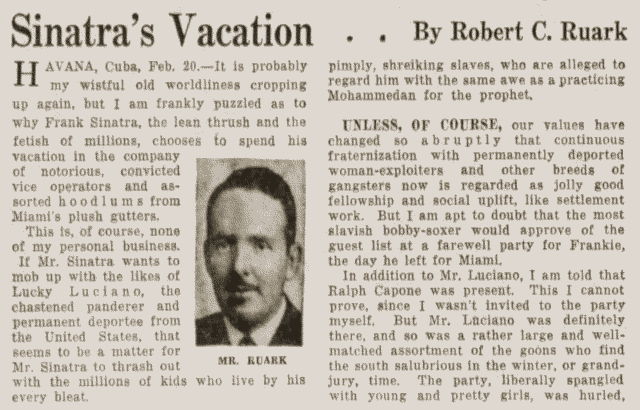
Ruark newspaper column
No available evidence supports the idea of a large Mafia convention held at Havana, Cuba, during Lucania's stay. Visits of top New York-area racketeers and personal friends of Lucania are documented. However, these visits involved no more than a few crime figures at a time and were spaced out from early December 1946 to the middle of February 1947. The smaller, separate visits may have been conducted intentionally in order to avoid the official and press attention that would be generated from a large number of mobsters suddenly turning up in Havana.
Secret travel to and from the island nation and an entirely unobserved large-scale convention cannot be ruled out, but, given the surveillance of Lucania during his time in Cuba and the degree of unnecessary risk to underworld figures traveling illegally, the suggestion of an entirely secret convention seems merely a conspiracy theory.
The mobster visits before Christmas 1946, occurring in very small groups, were made by close friends and associates of Lucania and top leaders in his New York-based crime family. These are consistent with the report by Bill Bonanno that Lucania was consulted before the Commission - meeting in Miami, Florida - endorsed Frank Costello as Lucania's formal successor in the role of crime family boss.
Given the underworld business interests of the parties involved in the small Havana gatherings in 1946-1947, it appears likely that there was at least some conversation about gambling investments and narcotics trafficking. Considering the timing of the opening of the Flamingo hotel-casino at Christmastime in 1946 and the murder of Benjamin Siegel the following June, it also seems likely that unhappiness with Siegel's handling of underworld investments in the project reached Charlie Lucky's ears.
However, the legendary board meeting of Mafia leaders, the designation of a new boss of bosses and the roll-call votes on issues like narcotics and the Siegel assassination appear to be little more than fantasy.
Thanks to organized crime historian Edmond Valin for his valuable feedback on this article. View Valin's articles in this website's Rat Trap section.
1 According to Salvatore "Bill" Bonanno, son of longtime Mafia boss Joseph Bonanno, the 1946 Commission meeting was held in December at Miami, Florida, with a followup meeting in February, 1947, at Fort Lauderdale, Florida. (Bonanno, Bill, with Gary B. Abromovitz, The Last Testament of Bill Bonanno: The Final Secrets of a Life in the Mafia, New York: Harper, Chapter 9.)
2 "Letters received - 1922," Frank Morelli prisoner file, no. 11332, Atlanta Federal Prison, National Archives and Records Administration; "Letters sent - 1922," Frank Morelli prisoner file, no. 11332, Atlanta Federal Prison, National Archives and Records Administration.
3 Passenger manifest of S.S. Ponce de Leon, arriving Key West, Florida, on Feb. 13, 1922; Passenger manifest of S.S. Cuba, arriving Key West, Florida, on Nov. 14, 1925. The Torrio companions on the 1922 trip included Patrick McFarland of Chicago, and Mr. and Mrs. Alfred Lingo (possibly Alfred "Jake" Lingle) of Chicago.
4 Bonanno, Joseph, with Sergio Lalli, A Man of Honor: The Autobiography of Joseph Bonanno, New York: Simon and Schuster, 1983, p. 55-57; Giuseppe Bonanno Detroit & Canada Tunnel crossing into U.S., May 18, 1938, serial no. 136. Bonanno explained his 1924 entry into the U.S. upon his reentry from Canada in 1938.
5 Passenger manifest of S.S. Cuba, departed Havana, Cuba, on Nov. 6, 1926, arrived Key West, Florida, Nov. 6, 1926.
6 Downey, Patrick, Legs Diamond: Gangster, Createspace, 2011.
7 Passenger manifest of S.S. Gov. Cobb, departed Havana, Cuba, on April 2, 1930, arrived Key West, Florida, April 2, 1930.
8 "Brother of gangster Owney Madden faces deportation as undesirable criminal alien," New York Times, Sept. 10, 1953, p. 13; Passenger manifest of S.S. Iroquois, departed Havana, Cuba, on Jan. 25, 1931, arrived Miami, Florida, on Jan. 26, 1931.
9 Passenger manifest of S.S. America Oriente, departed Havana on Feb. 7, 1937, arrived New York City on Feb. 9, 1937.
10 Passenger Manifest of S.S. Oriente arrived New York City on Jan. 25, 1938.
11 "Meyer Lansky," FBI report from Washington Field Office, file no. 92-2831-8, Jan. 28, 1958, p. 3.
12 Passenger manifest of American Seaplane, NC 15374, Feb. 22, 1940.
13 SAC Tampa, "La Cosa Nostra," FBI Memorandum, file no. 92-6054-432, NARA no. 124-10215-10236, Sept. 11, 1963.
14 Passenger manifest, Pan Am Airways, NC-33321, arrived Miami, Florida, on April 13, 1946.
15 Gentile, Nick, with Felice Chilanti, Vita di Capomafia, Rome: Crescenzi Allendorf, 1993, p. 124.
16 The Last Testament of Bill Bonanno states that the Commission in 1936 considered whether to grant permission for Arthur "Dutch Schultz" Flegenheimer to murder prosecutor Thomas Dewey. This is one of many problem assertions in the Bonanno book. Schultz had been killed in 1935.
17 Dewey, Thomas E., Twenty Against the Underworld, Garden City, NY: Doubleday & Company, 1974, p. 266; "Lucania sentenced to 30 to 50 years; court warns ring," New York Times, June 19, 1936, p. 1; "Salvatore Lucania,..." FBI report NY 62-8768, file no. 39-2141-46, July 2, 1946, p. 4; Receiving blotter, Chas. Luciano, no. 92168, Sing Sing Prison, June 18, 1936; Rosen, A., "Charles 'Lucky' Luciano's parole and deportation," FBI memorandum to E.A. Tamm, file no. 39-2141-40, March 6, 1946; "Dewey commutes Luciano sentence," New York Times, Jan. 4, 1946, p. 25. See also: Hunt, Thomas, "Mob boss 'Luciano' in the hands of the law," The American Mafia, mafiahistory.us, 2018.
18 Flynn, James P., "Crime conditions in the New York Division," FBI report, file no. 62-9-34-692, NARA no. 124-10348-10068, Dec. 3, 1962, p. 7. Flynn's report, apparently based upon information provided by informant Joseph Valachi, indicated that a man whose name was pronounced something like "Chee Gusae" served as Luciano Family boss for a year after Luciano was imprisoned and Vito Genovese fled the U.S. to avoid prosecution for murder. Costello "took over as boss" after "Gusae's" death of natural causes.
19 "Dewey commutes Luciano sentence," New York Times, Jan. 4, 1946, p. 25; "Luciano dies at 65; was facing arrest," New York Times, Jan. 27, 1962, p. 1; "Salvatore Lucania...," FBI report NY 62-8768, file no. 39-2141-9, May 5, 1946, p. 2; Rosen, A., "Charles 'Lucky' Luciano's parole and deportation," FBI memorandum to E.A. Tamm, file no. 39-2141-40, March 6, 1946; Rosen, A., "Charles 'Lucky' Luciano parole," FBI memorandum to E.A. Tamm, file no. 39-2141-18, April 3, 1946; "Salvatore Lucania,..." FBI report NY 62-8768, file no. 39-2141-46, July 2, 1946, p. 4.
20 "Salvatore Lucania...," FBI report NY 62-8768, file no. 39-2141-9, May 5, 1946, p. 9; "Charles Luciano, Anti-Racketeering," translations of Italian language articles appearing in the Jan. 11, Jan. 18 and Jan. 25, 1959, issues of L'Europeo magazine, FBI memo, file no. 39-2141-195, Feb. 18, 1959.
21 "Charles 'Lucky' Luciano," FBI report, file no. 39-2141-77, Feb. 12, 1947, p. 2; "Charles Luciano, Anti-Racketeering," translations of Italian language articles appearing in the Jan. 11, Jan. 18 and Jan. 25, 1959, issues of L'Europeo magazine, FBI memo, file no. 39-2141-195, Feb. 18, 1959; Rosen, A., "Charles 'Lucky' Luciano, Miscellaneous Information," FBI memo to E.A. Tamm, file no. 39-2141-71, Feb. 10, 1947, p. 1.
22 Gosch, Martin A., and Richard Hammer, The Last Testament of Lucky Luciano, Boston: Little, Brown and Company, 1975, pp. 305-326. Organized crime historian Richard N. Warner performed a painstaking analysis of the Gosch-Hammer book in his article, "The Last Word on 'The Last Testament.'" published in the April 2012 issue of Informer: The History of American Crime and Law Enforcement.
23 Cirules, Enrique, The Mafia in Havana: A Caribbean Mob Story, New York: Ocean Press, 2004, pp. 36-41.
24 Wolf, George, with Joseph DiMona, Frank Costello: Prime Minister of the Underworld, New York: William Morrow & Company, 1974, pp. 174-175.
25 Gentile, Nick, with Felice Chilante, Vita di Capomafia, Rome: Crescenzi Allendorf Editori, 1993, p. 170.
26 Investigation of Organized Crime in Interstate Commerce, Part 7, New York - New Jersey, Hearings before the Special Committee to Investigate Organized Crime in Interstate Commerce, U.S. Senate, 81st Congress 2nd Session, 82nd Congress 1st Session, Washington D.C.: U.S. Government Printing Office, 1951, pp. 338-339.
27 Investigation of Organized Crime in Interstate Commerce, Part 7, New York - New Jersey, Hearings before the Special Committee to Investigate Organized Crime in Interstate Commerce, U.S. Senate, 81st Congress 2nd Session, 82nd Congress 1st Session, Washington D.C.: U.S. Government Printing Office, 1951, p. 288-294.
28 Bonanno, Bill, with Gary B. Abromovitz, The Last Testament of Bill Bonanno: The Final Secrets of a Life in the Mafia, New York: Harper, 2011, Chapter 9.
29 Air passenger manifest, Plane no. CU-T8, Compania Cubana de Aviacion, Trip no. 494, originating in Havana, Cuba, destined for Miami Florida, Nov. 5, 1946; Air passenger manifest, Plane no. NC-33610, Pan American World Airways, Trip no. 420, originating in Havana, Cuba, destined for Miami, Florida, Dec. 3, 1946.
30 Air passenger manifest, Plane no. NC-19902, Pan American World Airways, Trip no. 428, originating in Havana, Cuba, destined for Miami, Florida, Dec. 9, 1946.
31 Investigation of Organized Crime in Interstate Commerce, Part 7, New York - New Jersey, Hearings before the Special Committee to Investigate Organized Crime in Interstate Commerce, U.S. Senate, 81st Congress 2nd Session, 82nd Congress 1st Session, Washington D.C.: U.S. Government Printing Office, 1951, p. 335.
32 Air passenger manifest, Plane no. NC-19910, Pan American World Airways, Trip no. 420, originating in Havana, Cuba, destined for Miami Florida, Dec. 17, 1946.
33 Air passenger manifest, Plane no. NC-33321, Pan American World Airways, Trip no. 428, originating in Havana, Cuba, destined for Miami, Florida, Feb. 14, 1947; "Summary Memorandum Re: Francis Albert Sinatra," FBI file 62-83219 Section 1, Sept. 29, 1950, p. 42.
34 Air passenger manifest, Plane no. NC-19118, Pan American World Airways, Trip no. 414-A, originating in Havana, Cuba, destined for Miami, Florida, Feb. 18, 1947.
35 Air passenger manifest, Plane no. NC-34948, Pan American World Airways, Trip no. 420, originating in Havana, Cuba, destined for Miami, Florida, July 25, 1946; Air passenger manifest, Plane no. NC-45375, Pan American Airways, Inc., Flight no. 442/17, originating in Havana, Cuba, destined for Miami, Florida, June 17, 1948.
36 "Summary Memorandum Re: Francis Albert Sinatra," FBI file 62-83219 Section 1, Sept. 29, 1950, p. 46; File review and summary clerk, "Frank Sinatra, aka Francis Albert Sinatra, Frankie Sinatra," FBI Memorandum, file no. 100-41413-148, , March 9, 1962, p. 29.
37 "Summary Memorandum Re: Francis Albert Sinatra AKA Frank Sinatra," Federal Bureau of Investigation, Sept. 29, 1950, pp. 40-41. One version of the initial Robert Ruark newspaper column can be found on Page 12 of the Evansville IN Press paper of Feb. 20, 1947.
38 "Summary Memorandum Re: Francis Albert Sinatra AKA Frank Sinatra," Federal Bureau of Investigation, Sept. 29, 1950, pp. 42.
39 File review and summary clerk, "Frank Sinatra, aka Francis Albert Sinatra, Frankie Sinatra," FBI memorandum, file no. 100-41413-148, March 9, 1962, p. 36.
40 "Summary Memorandum Re: Francis Albert Sinatra AKA Frank Sinatra," Federal Bureau of Investigation, Sept. 29, 1950, pp. 40-41.